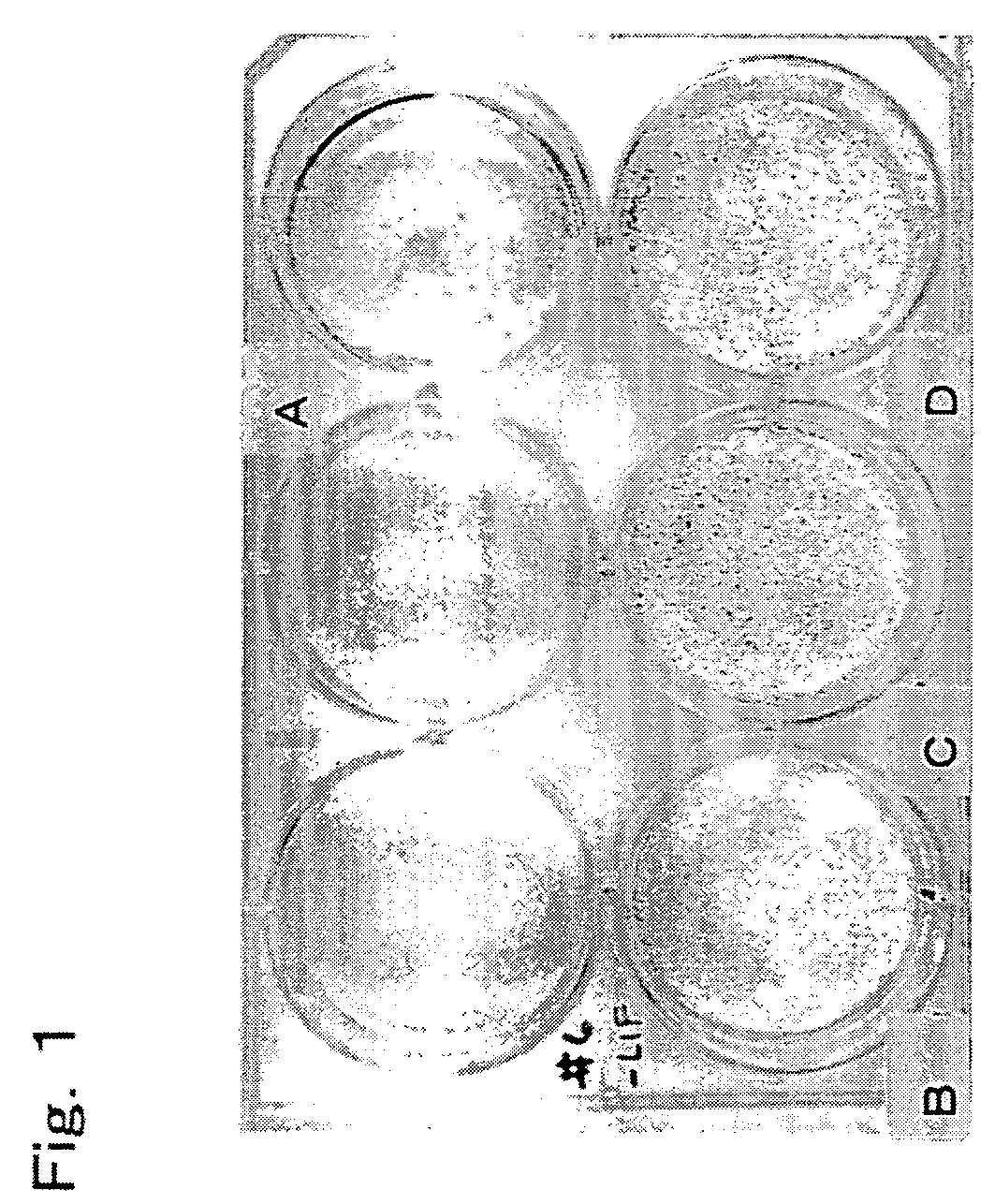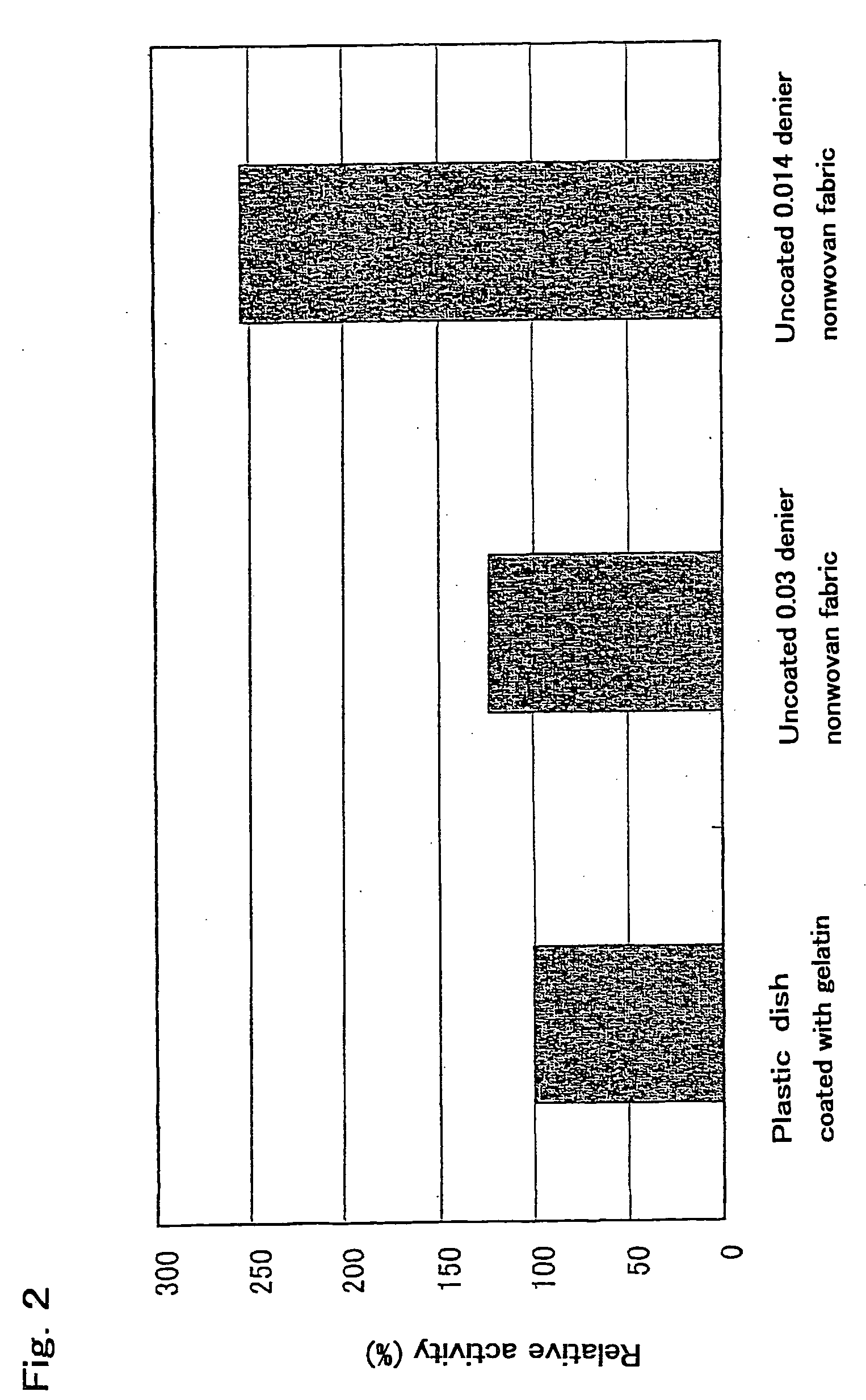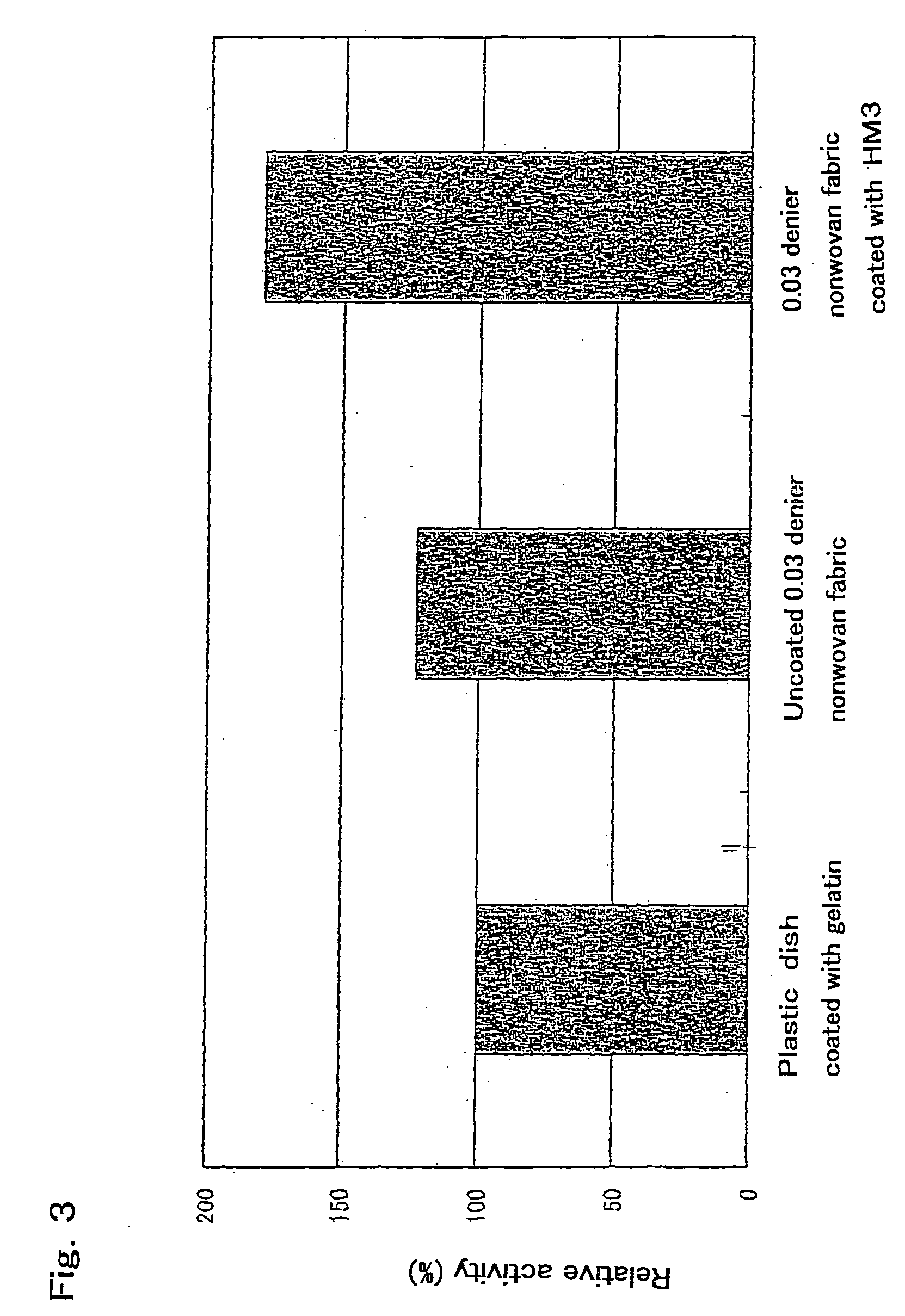Base material for culturing embryo stem cells and culture method
a technology of stem cell culture and embryo stem cells, which is applied in the field of culture base material for embryonic stem cells, can solve the problems of complex and time-consuming process for culturing embryonic stem cells, serious problems in methods, and insufficient es cell cultur
- Summary
- Abstract
- Description
- Claims
- Application Information
AI Technical Summary
Benefits of technology
Problems solved by technology
Method used
Image
Examples
example 1
Preparation of Embryonic Stem Cell Culture Medium
[0078] To proliferate embryonic stem cells, an ES cell culture medium was prepared by adding the following factors to Dulbecco's Modified Eagle Medium (hereinafter referred to as DMEM, Cat. No. 11995, manufactured by GIBCO BRL Co.) at final concentrations shown below. 15% fetal calf serum (manufactured by BIO WHITTAKER), 0.1 mM β-mercaptoethanol (manufactured by SIGMA), 1× nonessential amino acid stock (Cat. No. 11140-050 manufactured by GIBCO BRL Co.), 1 mM sodium pyruvate (Cat. No. 11360-070 manufactured by GIBCO BRL Co.), 2 mM L-Glutamine (Cat. No. 25030-081 manufactured by GIBCO BRL Co.), and 1000 units / ml ESGRO (manufactured by CHEMICON International Inc. (product number ESG1107): containing mouse LIF as an active ingredient). An ES cell assay culture medium for ES cell differentiation suppression assay was prepared by removing ESGRO from this ES cell culture medium.
example 2
Culture of Embryonic Stem Cells
[0079] Gelatin (Type A: from porcine SKIN, G2500 manufactured by SIGMA Co.), was dissolved in distilled water to a concentration of 0.1%, was sterilized. A dish for cell culture with a diameter of 6 cm was coated to 5 ml of a sterilized 0.1% aqueous solution of gelatin, and allowed to stand at room temperature for 10 minutes or more. The aqueous solution of gelatin was removed. 2×106 mouse embryo primary culture cell (Cat. No. YE9284400 manufactured by Lifetech Oriental Co.) treated with mitomycin C (manufactured by KYOWA HAKKO KOGYO Co., Ltd.) was disseminated and cultured for 5 hours or more at 37° C. in 5 ml of DMEM containing 10% fetal bovine serum (manufactured by GIBCO BRL) using a 5% CO2 incubator (manufactured by Tabai Espec Corp.). D3ES cells of mouse embryonic stem cell line (available from Rolf Kemler, Max Planck Institut fur Immunbiologie, Stuheweg 51, D-79108 Freiburg, Germany) were disseminated over the feeder layer of mouse embryo prim...
example 3
ES Cell Differentiation Suppression Assay
[0080] The D3ES cells cultured in Example 2 were washed twice with PBS. After the addition of 0.25% trypsin solution (15090-046 manufactured by GIBCO BRL), the mixture was incubated for 5 minutes at 37° C. Undifferentiated D3ES cell colonies were removed from the feeder. 5 ml of ES cell culture medium was added, the cell colonies were distributed using a small pipette, moved to a 15 ml sterilized tube, and centrifuged for 5 minutes at 800 rpm using a desktop centrifuge (manufactured by TOMY SEIKO Co., Ltd.) to pelletize the cells. The supernatant was removed. The cells were suspended again in 5 ml of a fresh ES cell culture medium, disseminated on a cell culture dish with a diameter of 6 cm previously coated with a 0.1% aqueous solution of gelatin, and incubated for 20 minutes at 37° C. After 20 minutes, the medium containing floating cells was collected and moved to a sterilized tube using a pipette and pelleted by centrifugation for 5 min...
PUM
| Property | Measurement | Unit |
|---|---|---|
| pore size | aaaaa | aaaaa |
| pore diameter | aaaaa | aaaaa |
| pore diameter | aaaaa | aaaaa |
Abstract
Description
Claims
Application Information
 Login to View More
Login to View More - R&D
- Intellectual Property
- Life Sciences
- Materials
- Tech Scout
- Unparalleled Data Quality
- Higher Quality Content
- 60% Fewer Hallucinations
Browse by: Latest US Patents, China's latest patents, Technical Efficacy Thesaurus, Application Domain, Technology Topic, Popular Technical Reports.
© 2025 PatSnap. All rights reserved.Legal|Privacy policy|Modern Slavery Act Transparency Statement|Sitemap|About US| Contact US: help@patsnap.com



